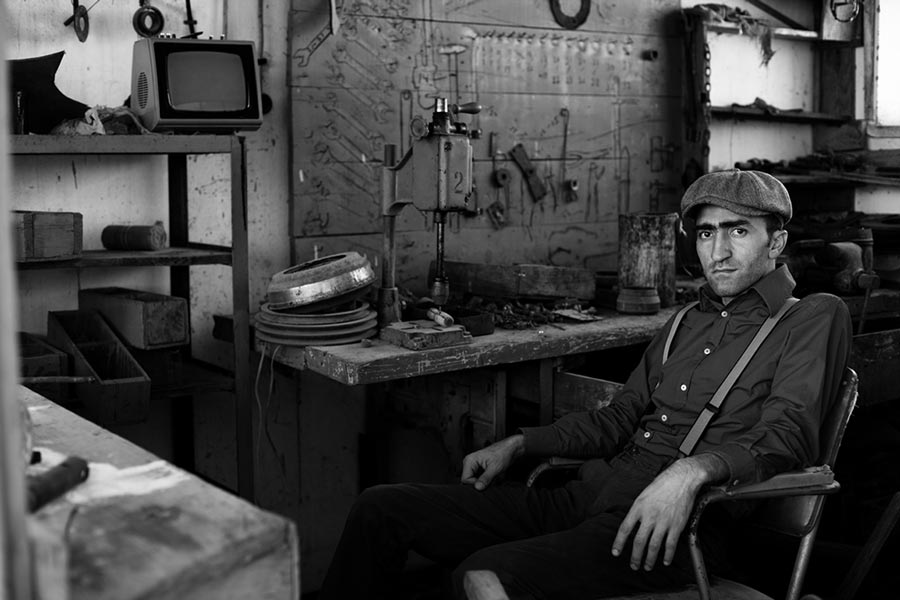There are at least 10 reasons why “This is not your grandfather’s shop anymore”. They
- Technician Training Protocols
- Technician Training Resources
- Diagnostic Equipment and Information Access
- Digital Shop
- Employee Recruitment, Testing, etc.
- Legal Issues: EPA, Green Shops, Employee Issues
- Front Counter and Transparency: Pictures, Email, Text
- eCommerce Channels like Amazon and eBay
- YouTube and the Educated DIYers
- What’s Next: Future Technicians in the Digital Age
We often talk about “the good old days” of cars. My favorite “good old days” car was my 1968 GTO. That car would destroy a set of rear tires in a week, and the exhaust would rattle the windows of buildings as I drove past.
On the flip side, it got 8 miles per gallon if you drove it easy, the brakes were terrible, and handling wouldn’t even begin to compare with other vehicles today, even my minivan. Bias ply tires were the only option back then, and the car came with power nothing. If there was any rain or ice, it was dangerous to drive. It may have been cool but not efficient or very safe.
Were “the good old days” really that good? How has technology improved not only our vehicles but our lives as well? And how has it affected the way we do business?
I’m from the generation of points and condensers, tach and dwell
As I said before, that GTO I had got 8 miles per gallon if you drove it easy and kept the speed down to 55 MPH or less. The average fuel economy for a 2016 vehicle was 24.8 miles per gallon according to phys.org. That average includes SUVs and pickups.
The GTO in “the good old days” did not have power brakes, power steering, or air conditioning. 4-Wheel Drum brakes did not have a very good stopping distance. In a panic stop, about the best you could hope for was to slow down aggressively. The seat belt was just that: no shoulder belt or any other “passive restraint” device. The dash was unpadded steel and was not very forgiving in a head contact situation.
Vehicles were not super technical back then and almost anyone with some basic mechanical abilities could at least make a car run. Basic hand tools, a timing light, and maybe something as “high-tech” as a tach and dwell meter were about all that was needed. A “tune-up” consisted of new points, condenser, rotor, distributor cap, spark plugs, wires, a carburetor adjustment, and probably a fuel and air filter.
Today, a “tune-up” is very different. Most of those items listed before don’t even exist anymore. Now a “tune-up” involves a diagnostic computer, a technician that is trained in the proper operation of that technology, and an advisor capable of correctly describing the “concern, cause, and correction” to make the owner’s pain go away. Then begins the actual repair process.
Today’s technician has probably made some personal investment for training, has thousands of dollars tied up in tools, and is continually advancing his/her education due to the constant change in technology. According to Wikipedia, in 1968 (year of my GTO), the minimum wage was $1.66. That equates to $11.77 inflation adjusted to 2018. Finding a qualified, teachable, dependable technician is becoming increasingly difficult.
The digital age has also changed how we do business. Digital pictures and inspections, information access for the technician, Amazon and eBay, YouTube, and online blogs have all affected our line of work. Information and misinformation are challenges. Internet shoppers want to bring their own parts, the owner’s self-diagnosis isn’t always correct, and it can be difficult to convince customers that their issue could be something other than their diagnosis.
I believe there is a “fix” for all of the challenges we face. As with a 12-step program, the first step is admitting there’s a problem. Secondly, the next biggest issue is that we, as humans, resist change. To continue to do business with a “We’ve done it this way for years” attitude cannot end well. Change is inevitable.
The goal of this series is to identify some of the challenges we face and look at possible solutions in our everchanging industry.
 Article By: Bruce McDowell
Article By: Bruce McDowell
Bruce is currently a Service Advisor for Garber Diesel Service Truck & Trailer Service Center
Bruce’s credentials include: AMAM through AMI, ASE Certified Service Advisor, Ford Motor Company – Master Service Manager, Master Service Advisor, Master Parts Manager, Master Warranty Administrator plus 2 Management Degrees, Stationary Engineer License, and Retired Navy. And above all… modest.

